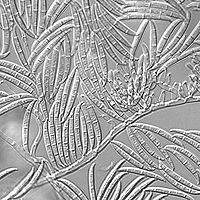
Photo from wikipedia
Key messageExploring large genomic data sets based on the latest reference genome assembly identifies the rice ortholog APO1 as a key candidate gene for number of rachis nodes per spike… Click to show full abstract
Key messageExploring large genomic data sets based on the latest reference genome assembly identifies the rice ortholog APO1 as a key candidate gene for number of rachis nodes per spike in wheat.AbstractIncreasing grain yield in wheat is a key breeding objective worldwide. Several component traits contribute to grain yield with spike attributes being among the most important. In this study, we performed a genome-wide association analysis for 12 grain yield and component traits measured in field trials with contrasting agrochemical input levels in a panel of 220 hexaploid winter wheats. A highly significant, environmentally consistent QTL was detected for number of rachis nodes per rachis (NRN) on chromosome 7AL. The five most significant SNPs formed a strong linkage disequilibrium (LD) block and tagged a 2.23 Mb region. Using pairwise LD for exome SNPs located across this interval in a large worldwide hexaploid wheat collection, we reduced the genomic region for NRN to a 258 Kb interval containing four of the original SNP and six high-confidence genes. The ortholog of one (TraesCS7A01G481600) of these genes in rice was ABBERANT PANICLE ORGANIZATION1 (APO1), which is known to have significant effects on panicle attributes. The APO1 ortholog was the best candidate for NRN and was associated with a 115 bp promoter deletion and two amino acid (C47F and D384 N) changes. Using a large worldwide collection of tetraploid and hexaploid wheat, we found 12 haplotypes for the NRN QTL and evidence for positive enrichment of two haplotypes in modern germplasm. Comparison of five QTL haplotypes in Australian yield trials revealed their relative, context-dependent contribution to grain yield. Our study provides diagnostic SNPs and value propositions to support deployment of the NRN trait in wheat breeding.
Journal Title: Theoretical and Applied Genetics
Year Published: 2019
Link to full text (if available)
Share on Social Media: Sign Up to like & get
recommendations!